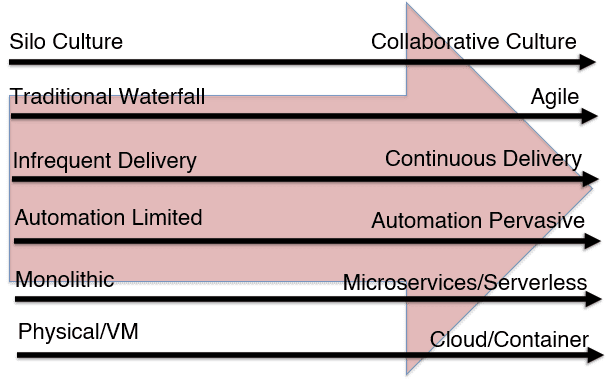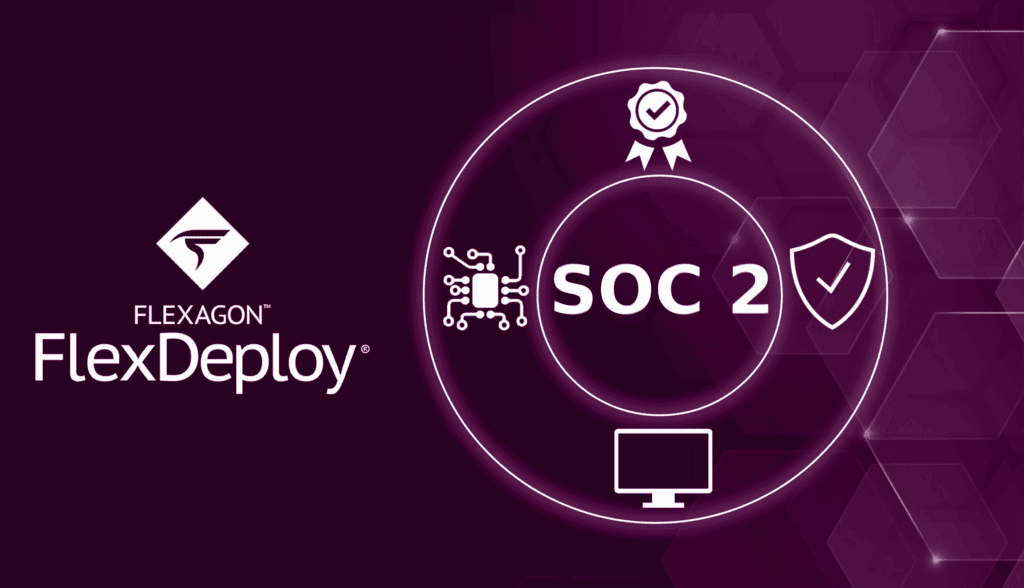The following is a brief summary of the information covered in the webinar: FlexDeploy for Oracle E-Business Suite and Cloud, which can be accessed here.
A Shifting IT Landscape
The IT landscape is shifting to feature more agile, continuous, and automated processes, increasingly on the Cloud. Oracle E-Business Suite (EBS) is an interesting ERP as it is generally a large, monolithic, heavily on-prem application with more traditional processes. As a result, it can be difficult to come to a solution to optimize the use of EBS.

FlexDeploy is a DevOps platform that integrates the end-to-end toolchain from agile planning and tracking of issues to source control management, artifact repository management, and build and testing throughout the deployment and release lifecycles. It also has support for both on-prem and cloud technologies. FlexDeploy can help you with every step of your software delivery lifecycle, including build automation, deployment automation, and release orchestration.
FlexDeploy supports a wide range of technologies through out-of-the-box plugins for the broad Oracle ecosystem (DB, Middleware, BI, Apps, Cloud) including EBS. Users can leverage the platform (i.e., build, deploy, and release), then plug into and integrate with various other solutions across the toolchain, such as source control systems, test tools, agile and service management tools, etc. to ensure a successful change process. You can be assured that changes are completed with speed and quality!
Can FlexDeploy be run on-prem or the Cloud?
FlexDeploy can be run on premises or in the cloud. On Oracle Cloud Infrastructure, you can run FlexDeploy on WebLogic or Tomcat and use a variety of data stores, including the traditional Oracle Database and the Autonomous Database, MySQL, and Postgres. You can also run FlexDeploy as a container in the Oracle Kubernetes Engine (OKE) or any Kubernetes or Docker runtime. Additionally, FlexDeploy can be run on top of the Oracle Java Cloud Service.
Where can I run E-Business Suite, Database, and Middleware?
Of course, Oracle EBS, Database, and Middleware can all be run on premises. However, there has been quite a shift in focus to moving to the Cloud. EBS is one such technology that is being run increasingly on the Cloud, namely Oracle Cloud Infrastructure (OCI). Some use the traditional Oracle Database, and some use the Autonomous Database.
Cloud based implementations are also on the rise for Database. Some companies are supporting their applications with the Oracle Database on top of OCI, while others have adopted the Autonomous Database.
For Fusion Middleware and Middleware in general, an increasing number of companies are moving to the Cloud. Many times, Middleware applications are brought along as ERPs are moved to the Cloud and on top of OCI. The use of “traditional” cloud PaaS services, like the Java Cloud and the SOA Cloud Service, are also popular.
Augmenting these shifts to the Cloud, is the adoption of Cloud Native and other PaaS services. The top PaaS service used with FlexDeploy is the Oracle Integration Cloud.
What does moving to the Cloud mean?
If and when you decide to move to the Cloud, It is desirable to get EBS, Fusion Middleware, and Database lifted and shifted as quickly as possible and get back to business as usual. Thankfully, if you are already using FlexDeploy before the move to the Cloud, you can reuse all of the deployment automations in FlexDeploy and the move to the Cloud with EBS, Fusion Middleware, and Database is easy! This mitigates the risk of moving these technologies to the Cloud.
You can also move other technologies to the Cloud, including OBIEE, ODI, APEX, JET, and ORDS. It is quite common to pair the move to the Cloud with upgrades to a variety of technologies.
When are you going to move to the Cloud?
For a more complete explanation of the above information on moving technologies to cloud, check out the recording of the webinar: FlexDeploy for Oracle E-Business Suite and Cloud. It’s free! All you have to do is follow this link to the landing page and enter your email so we can send you the recording.
Want to keep learning? Check out our other on-demand and upcoming webinars.
Please comment or contact [email protected] with any questions




